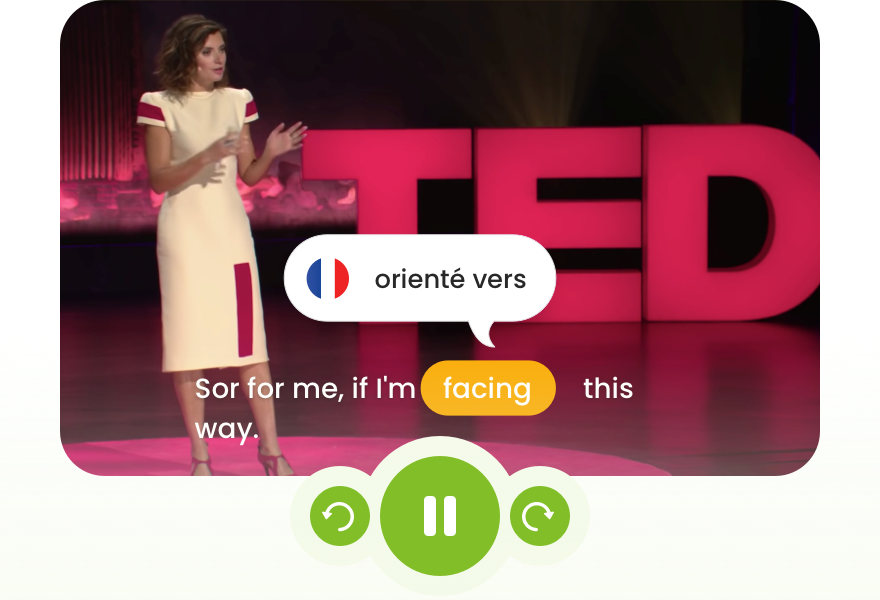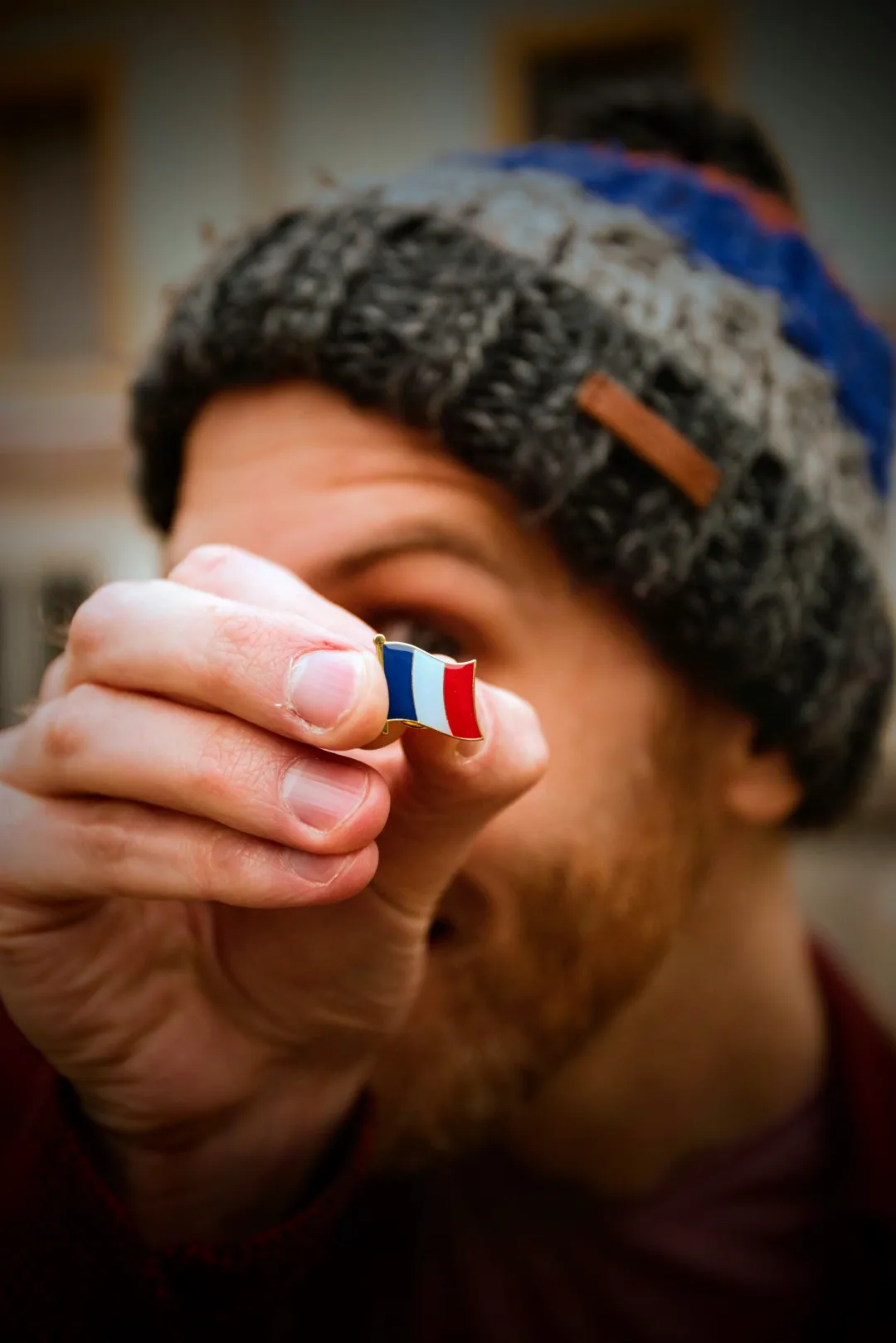When we first start learning a language everything is new and exciting.
Each word or phrase we master and every small interaction we manage to have feels like a huge win (and it is!). But when we reach at least an intermediate level we start to feel a disconnect.

A disconnect from how we’d like to express ourselves in our target language and where we’re currently at. This gap creates a gulf that starts to separate us from native speakers of our target language and then we start shying away from engaging with them.
No, that’s NOT what I wanted to say.
Ugh, that’s not what I meant.
I’d love to tell them this funny story, but what if I mess it up and all the humor is lost?
In short, language learners frame this as not being able to be themselves in their target language. And this disconnect can have a massive impact on your confidence and your motivation to continue learning the language.
In our experience, there are 3 main guilty culprits that prevent you from being 100% yourself in your target language.
- A lack of personalized resources
- Not having a clear system in place to learn vocab that’s important to your own unique self expression
- A negative mindset
Let’s look at each of those so you can finally start to express yourself as freely in your target language as your mother tongue.

The secret to finally understanding native speakers?
Forget the textbooks–learn with authentic content from the best creators and see progress in days, not years.
1. Personalize your listening resources
Your language learning is based, largely, on input. If you’re struggling to be yourself in your target language maybe it’s due in part to not exposing yourself to the right input.
Traditionally, language learning materials and courses have been a little out-of-touch with the realities of living your day-to-day life in the language. Jennifer Murray, fluent Spanish speaker and ELT materials editor, mentions how a “lack of context” is a big failing with a lot of learning materials. She highlights that many language courses and materials attempt “to make everything sort of global when actually, even when we’re in the global world, language learning is still quite a local, personal thing.”
This leads to many courses and materials sticking to “safe” topics that can be easily agreed upon by publishers. The impact of this is that many learners go through courses or textbooks, believing they’ve got a great base in the language, only to go to a country where the language is spoken and struggle to keep up. Back when I was teaching English I heard this constantly: “I can pass exams with flying colors, but once I’m in the country I’m absolutely lost.”
Now, that’s not to say that you should abandon all traditional textbooks or courses. At the end of the day you still need a guide that will help you move through different levels of the language and give you a solid foundation, but you need to supplement that with materials that are personalized to you.
Get started in creating personalized listening resources
The easiest way to get started is to source your own listening material. While dialogues that are in textbooks can be helpful, and are probably the best option when you’re really starting out in the language, you need to diversify.
Thankfully, you’ve got a huge (even endless?) free library of native content in your target language to source from: YouTube.
The beauty about YouTube is that you can find native content in your target language that’s totally unfiltered. Creators aren’t worried about curriculums or the usual red tape that comes along with officially published learning materials: you’re getting a real dose of the language as it’s actually spoken in the country.
And when you’re choosing channels that match your interests, you’re going to find that you start to learn vocabulary that allows you to talk about your personal interests. You’re fuelling your vocabulary for conversations later in topics you actually care about.
Finding great channels in your areas of interest and that match your language level might be challenging. You can simply search “Best (target language) (topic) channels on YouTube” and you’ll already have a selection to check out.
At Interpolly we’ve tried to make this easier by filtering our videos by language level & category.
Another huge library at your disposal is Netflix (and you didn’t hear it from us but if you’ve got a good VPN you can usually get more content in your target language by changing your location to a country that speaks that language).
We’re also huge fans of rewatching your favorite TV shows dubbed in your target language. You already know what’s going on in the episodes and you get to rewatch something you love. Win-win!
Now that you’re exposing yourself regularly to topics that interest you, you’re going to find it easier to speak about them, but only if you have a good system in place to remember all that relevant vocabulary you’re learning.
2. Have a vocabulary retention system in place
As much as I’d love to tell you that language learning is a process of osmosis: it’s not. You won’t start magically speaking fluently about all the topics that interest you the most just by listening. This is where having a vocabulary retention system comes into play.
A vocabulary retention system is basically how you learn and retain all that new (super relevant) vocabulary you’re being exposed to. Here are my favorite systems to use.
System 1: Analog
Not everyone is a screen person. Some people love the feel of a nice gel pen scratching against paper. If that sounds like you, then try bullet journalling or creating your own flashcards for your language learning needs.
A while ago I decided to give bullet journalling a go.
I had an upcoming trip to Italy and wanted to learn enough basic Italian to order at a restaurant and do some basic touristy things. Personally, I found the whole thing very therapeutic! It’s a great way to disconnect and get creative. These Pinterest boards were a huge source of inspiration.
You can also create your own flashcards to help you memorize important vocabulary. Buy a simple pack of study cards and add the word in your native language on one side and on the other add the translation. Add an example sentence (your own or one you’ve come across) to help you see the expression or word in context.
Image source: https://www.languagementoring.com/vocabulary-flashcards-for-language-learning/
System 2: Digital & Spaced Repetition
While creating analog vocabulary retention systems is really fun and engages your creativity, the downside is that you don’t benefit from spaced repetition.
While you could do this manually using the analog system, it’s unlikely you’ll be able to keep track of when you have to study which vocabulary to keep it fresh in your mind. There are great apps that can remember this for you.
I’d be remiss not to mention our own flashcard feature designed as quizzes. Once you translate words from videos you’ve imported from YouTube, you create your wordbank. The words you pick up will be added to your own personal flashcard deck and our spaced repetition system will show you when you have to review them.
You can also add vocabulary you find from other sources. Check out the quick video below to see how Interpolly’s flashcard system works.
Another notable digital flashcard system is Anki. You can build your own decks or use decks created by other people.
Finally, don’t just limit yourself to learning vocabulary you come across from content. Throughout the day try thinking to yourself in your target language, when you get stuck for a word, make a quick note on the notes app in your phone. Later when you have time, look up the translation and create a flashcard for those expressions. Wordreference is my personal favorite translation dictionary.
The idea here is that you’re starting to translate your own thoughts. This is a powerful way to start using your target language in a meaningful and personal way that will definitely make you feel more like yourself while speaking it.
3. Work on your mindset: how to bounce back from bad experiences
There’s nothing worse than building up the courage to chat with someone in your target language and then the conversation goes off the rails. Maybe you forgot some key vocabulary. Perhaps you got muddled up in telling a story. Whatever it is, it doesn’t matter, the result is the same: you start to retreat.

You avoid trying to have real conversations and stick to the bare minimum. This will eventually make you feel more and more removed from the language. That’s why it’s important for your own self-expression to learn how to bounce back from a discouraging interaction.
Alex Barron, from French in Plain Sight, coaches hundreds of French students on how to transform their mindset to become more successful French speakers. Here are his top tips for cultivating a positive mindset after language set back.

Alex Barron
French Language Coach
Alex helps English speakers speak French with confidence by focusing on their mindset, learning strategies, and fun challenges.
“The first thing to do is, as the French say, rélativiser: relativize.” says Alex, “This is just one of thousands of exchanges you’re going to have. Remember that most of the time, your exchanges are absolutely fine.”
“We tend to remember the negative and forget the good. We need to actively build that positivity muscle.
“I also try to take at least one positive thing from the situation – this is crucial. Maybe it’s that I actually had the courage to speak to this person in the first place. Maybe I learnt a new phrase, maybe I learnt what I need to make a similar interaction more successful etc.
“Finally, I try to be kind to myself. There are a hundred reasons why the exchange didn’t go so well. Was I tired? Was my French brain just not turned on that day? Was the person rude and not very patient (if so then the problem is them, not me).”
The bottom line is that awkward situations are going to happen, no matter how hard you try.
So embrace them and stay positive.
It’s difficult to be yourself in another language, but all your progress compounds
It’s very hard to be yourself in another language. You’re having to translate and contextualize an entire lifetime of stories, memories, hobbies, and interests. All the while remembering grammar rules and vocabulary and keeping up with the other person you’re having a conversation with.
But all those small steps of progress you make eventually compound: adding blocks of language until you finally build something you’re truly proud of.

The secret to finally understanding native speakers?
Forget the textbooks–learn with authentic content from the best creators and see progress in days, not years.


